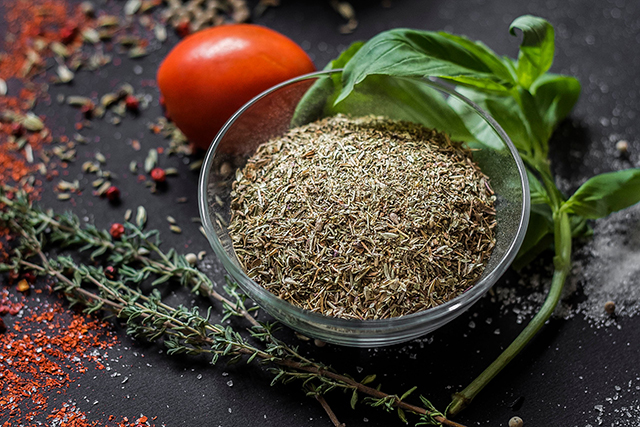 Thyme is a fragrant flowering plant that is used as a seasoning for culinary dishes or for perfumes in the manufacture of cosmetic products: soaps, shampoos, creams and gels. It is used in the production of wine and alcohol products. How to grow thyme? Unpretentious shrub to grow in the open ground in a country or personal plot is easy. Gardeners and gardeners planting greens and spices find a place for thyme in their beds or flower beds. As a result, they have a wonderful seasoning on the table and a remedy for the family first-aid kit.
Thyme is a fragrant flowering plant that is used as a seasoning for culinary dishes or for perfumes in the manufacture of cosmetic products: soaps, shampoos, creams and gels. It is used in the production of wine and alcohol products. How to grow thyme? Unpretentious shrub to grow in the open ground in a country or personal plot is easy. Gardeners and gardeners planting greens and spices find a place for thyme in their beds or flower beds. As a result, they have a wonderful seasoning on the table and a remedy for the family first-aid kit.
Content
Description
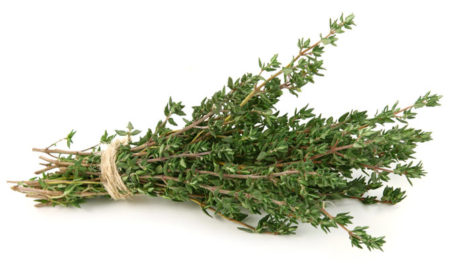
The people call this herb in different ways: thyme, Bogorodskaya grass, zhadolbnik, pine forest pepper, lemon darling. There are several hundred species of thyme, in Russia there are more than 170 species that grow in a wide variety of areas: in the forest, in sandy and clay steppes, on rocky slopes and even on rocks. Depending on the habitat, thyme has acquired several distinctive features, reflected in the name of the plants: ordinary, creeping, lemon-smelling.
The basic, that is, general characteristics, are identical for all types of thyme. This is a low (up to 35 cm in height) flowering shrub or shrub with erect or creeping shoots (see photo):
- thyme root - core, woody;
- stems and shoots - at the base are woody, sprawling, covered with hairs;
- leaves - different types of thyme can be of various shapes and sizes, hard, with smooth or jagged edges;
- flowers - collected in inflorescences at the ends of the stems in the form of a ball or cone, each flower has 4 erect stamens, the petals are painted in pink, white or lilac;
- fruit - a box with 4 nuts of almost spherical shape, slightly flattened.
The flowering period of thyme is from June to August, and fruit ripening occurs in late August to mid-September.
The main types
Several hundred varieties of thyme are divided into three main groups according to the location of branches and shoots; in these groups, plants can vary in leaf shape and color of petals.
Common thyme
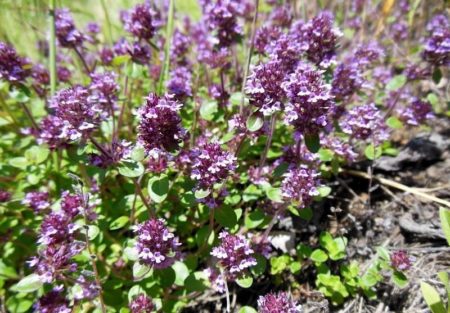
The representative of this group is a perennial shrub up to 40 cm high with a branched rod root system. The stems at the base are lignified, branched, tetrahedral herbaceous branches, pubescent with hairs. The side shoots are shortened. Ordinary thyme has dark green leaves, the edges are smooth, the leaf size does not exceed 10 mm. Flowers have a pale purple color, sometimes white. Inflorescences are located in the leaf sinuses. The flowering period is June-July. Fruits (zinobia) are 4 round-shaped nuts, ripen in late August, they are very small, only up to 1 mm in diameter.
Creeping
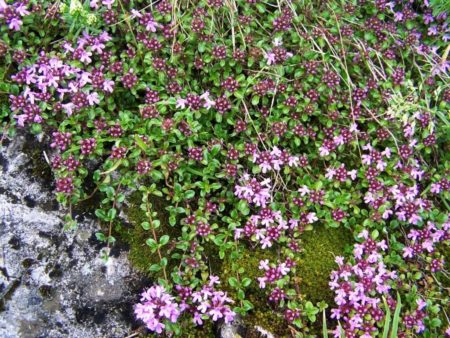
Thyme or Bogorodskaya grass - so, the people call the creeping thyme. It grows in steppe rocky areas or in forest elevated massifs. The height of the plant does not exceed 15 cm, the shoots are still, the stems of the peduncles are straight or slightly raised. In nature, densely located plants form turf-like glades.The leaf plate is straight, the edges do not bend down, they have special glands filled with essential oil. Sheet sizes: length - up to 10 mm, width - 2-4 mm. The fruits are small nuts in the shape of an ellipse, their length is only 0.6 mm. Flowering begins in late May and continues until September, the fruits appear in July-August, it depends on the climatic conditions of the region where thyme grows.
Lemon Smelling
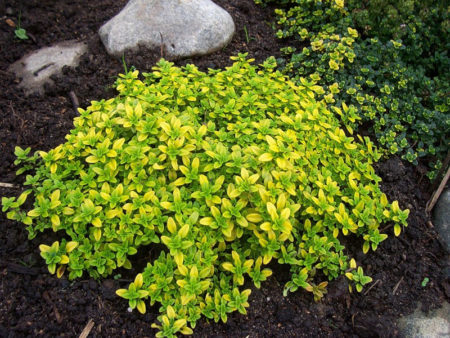
The very name of this type of thyme suggests that the aroma of leaves and flowers resembles the specific smell of lemon, but more subtle, without a bitter touch. The shrub is perennial, up to 30 cm high. The leaves of the plant are semi-oval in shape, bright yellow-green in color with glandular veins in which aromatic oils are formed. The smell can be felt if you rub the leaves between your fingers. Lemon-smelling thyme is often used in the manufacture of drinks, cosmetics, and as fragrances for medicinal powders for colds. This plant is a hybrid derivative of the crossing of two varieties of thyme and, in turn, has several varieties.
Outdoor cultivation conditions
Gardeners began to grow thyme in summer cottages and personal plots not so long ago. Previously, the population could not use the cultivated land for sowing spicy and ornamental plants due to the lack of free territories. Today, gardeners propagate thyme for their needs, as a plant useful in many respects. There are three main ways to grow thyme: seeds, cuttings, or dividing a bush.
Seed cultivation
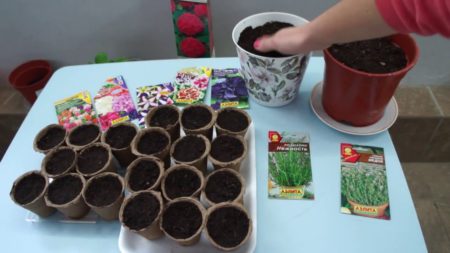
For the germination of small thyme seeds, you need land completely cleared of weed grass. Weeds will delay the already slow development of the plant, because at the beginning of the growing season seedlings sprout slowly, it takes almost a month to grow and adapt. Competitions with excess grass young thyme sprouts can not stand and die. Gardeners and gardeners grow thyme only in special cases in special cases: to obtain new varieties or to preserve and propagate unique plant varieties that are already available.
Cuttings
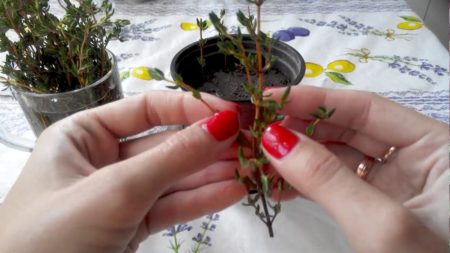
In the summer before flowering, thyme is propagated by rooting green cuttings. In this case, the survival of the plant is faster and with a greater guarantee of obtaining high-quality shrubs. Cuttings are harvested 2-3 weeks before flowering thyme. Cut off the tops of shoots up to 10 cm long, plant them in a sandy substrate and, to accelerate growth, insulate with a plastic film. Cuttings take root within a month. Then you can transplant thyme to a permanent place. The first 2-3 weeks, the sprouts need frequent, almost daily watering.
Dividing the bush
This method is considered by gardeners as the easiest and guaranteeing one hundred percent adaptation. In spring, summer or autumn, thyme bushes are dug up and divided into several parts depending on the branching of the root system (from 3 to 7 bushes). The landing site is prepared in advance, for spring - in the fall, and for summer or autumn planting - in the spring. This must be done 2-3 months before the separation of the bush. Seedlings planted in spring or early summer, by the beginning of winter, form fairly strong root processes, stems and branches develop faster, so that winter cold will not damage them.
Thyme: planting
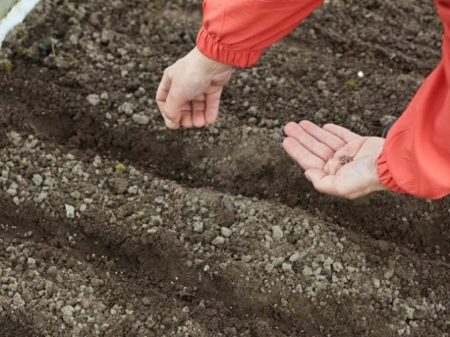
Thyme (and thyme) - perennial, in one place, it can successfully grow and develop for about 5-7 years. The site for planting thyme needs to be selected, taking into account this nuance, as well as all the important aspects of growing fragrant shrubs: selecting suitable planting material for the gardener, choosing a place, preparing the soil, and time for propagation.
How to choose and prepare seedlings
Experienced gardeners, having decided to grow thyme on their site, first of all, learn about the agrotechnical requirements of a new culture for them. In relation to thyme, it is safe to say that this plant will not cause many problems to gardeners. It is unpretentious in care, any novice plant grower can cope with planting and reproduction.
Seeds, green cuttings or thyme seedlings can be purchased in specialized stores, from private entrepreneurs, in online sales. When buying planting material, you should pay attention to the following indicators:
- seeds must be of high quality; shelf life cannot exceed 2 years;
- green thyme cuttings are stored for about 30 days, they are sold in special sealed containers to prevent shoots from drying out;
- young seedlings obtained by dividing the bush should have at least 5-8 root offspring, and the stems of the plant should be healthy, strong, without deformation.
Landing open thyme does not take much time, it is necessary to disinfect the planting material in a weak solution of potassium permanganate for 20-30 minutes before planting a seedling.
Site selection and soil preparation
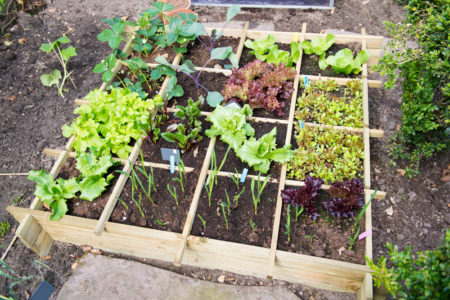
Thyme, growing, over time, occupies a significant territory in the suburban area. Some gardeners like this, others not especially, so the place chosen for growing thyme should be available for caring for it: weeding, thinning or removing overgrown bushes.
The place for planting thyme should be well lit by the sun, the plant tolerates a little shade satisfactorily, but the shady areas are not for thyme. In the shade, it stretches in height, flowering is noticeably reduced, and the leafy part, on the contrary, becomes thicker and covers the whole earth in the beds.
Thyme is not picky about the composition of the soil, but it is still preferable to plant it on neutral or slightly alkaline substrates, heavily clayey and excessively moistened earth inhibits plant growth, leading to rotting of the root system. It is necessary to equip drainage in such areas to drain water.
How to plant thyme in the country: the timing and rules of planting
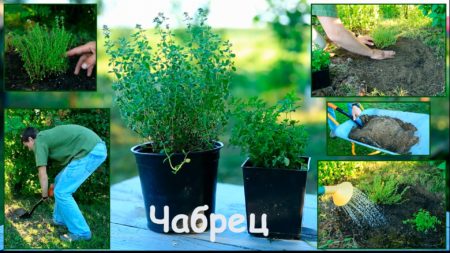
Thyme seedlings are planted in early spring or late autumn. The most suitable time for sowing is April-May. A plot for planting thyme is prepared in advance, in the summer - for autumn, and in the fall - for spring planting, or 1-2 months before planting seedlings.
The holes are dug 2 times larger than the pot in which the seedlings were grown, the depth is a little more (5-7 cm). Garden soil, light and well-fertilized, mixed with sand. A part is poured into the bottom of the fossa, a seedling is placed in the hole, and it is covered with the remaining substrate. The plant is watered and mulched with the material at hand: sawdust, wood chips, small pebbles or crushed bark.
Plant care
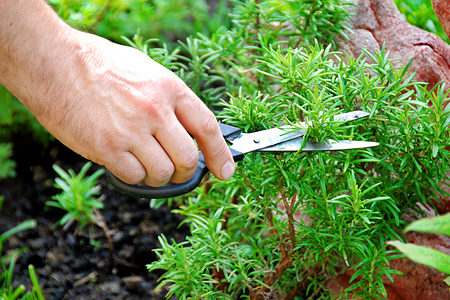
Having planted thyme in a permanent place, gardeners will not have difficulty in caring for it, it is not whimsical and will delight the owners with constant flowering all summer. Thyme care consists of three conditions:
- Watering. It is carried out as the soil dries, on hot summer days you will have to do it more often than usual, at this time moisture evaporates faster from the soil surface.
- Top dressing.Once a month, thyme is fed with complex mineral fertilizers common for garden crops. Environmental advocates growing plants, use organics for this purpose: infusion of mullein, herbs, bird droppings.
- Pruning. Produce it 2 times per season. In the spring, all dead and damaged branches are cut, and in the autumn, bushes are thinned out to prevent excessive growth.
In addition to these requirements, caring for thyme will require regular removal of weeds, loosening of the soil, and if thyme blooming is undesirable, then cutting the bush before this period.
Diseases and Pests
Thyme is resistant to pests and diseases, but with violations of agricultural cultivation or improper care, it is at risk of disease or pest infestation. In order to prevent the planting of thyme, they are sprayed with insecticide solutions, it is advisable to do this in early spring or after flowering.
Landscape use
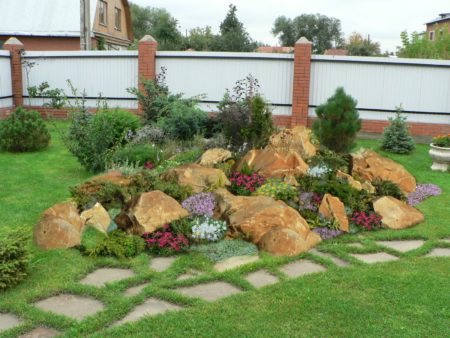
Thyme flowers are quite attractive in appearance, the green mass of leaves is also favorably distinguished by rich color and density, therefore landscape designers often use this plant when decorating garden plots: in rockeries, alpine slides, vertical landscaping and lawn design.
How does a plant winter
Thyme is extremely resistant to low temperatures, even severe frosts are not terrible for him, but in order to fully guarantee survival, you should cover the plantings by filling them with fallen leaves, peat or fir branches for the winter.
How to collect and store
Thyme is cut during the entire flowering period from July to September, dried flowers and leaves in natural conditions or in the oven. Fully dried inflorescences are stored in cardboard boxes or cloth bags. The shelf life of dried thyme is from 1 to 3 years.
Thyme in a home medicine cabinet
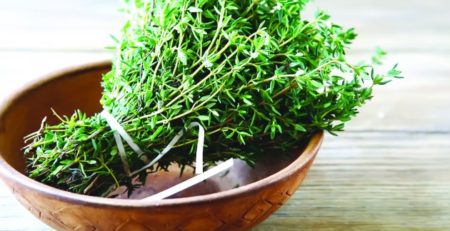
The useful properties of thyme are used not only in traditional medicine, traditional methods of treatment also do not exclude the use of herbal infusions from thyme in combination with medications. Tea, tinctures and decoctions of dried and fresh thyme are useful:
- during colds;
- with headache and insomnia;
- with inflammation of the throat and bronchi;
- to destroy parasites in the body;
- with nervous disorders.
Thyme tea is brewed in the usual way: 1 teaspoon in a glass of boiling water. Preparing an infusion or decoction at home is also simple: infusion - take 1 tablespoon of dried grass or flowers per 1 liter of boiling water, the proportions are the same for preparing a decoction, only boil it for 10-15 minutes over low heat.
Conclusion
Proponents of a healthy lifestyle sometimes refuse to take chemicals for colds and similar illnesses. In such cases, a fragrant warming and very useful tea from thyme will help them. Even official traditional medicine acknowledged that thyme drinks will not harm the human body, help to cope with the disease and strengthen the immune system. Now you know how to grow thyme in the garden or in the garden, we advise beginners to try their hand at this matter, you will not regret it.


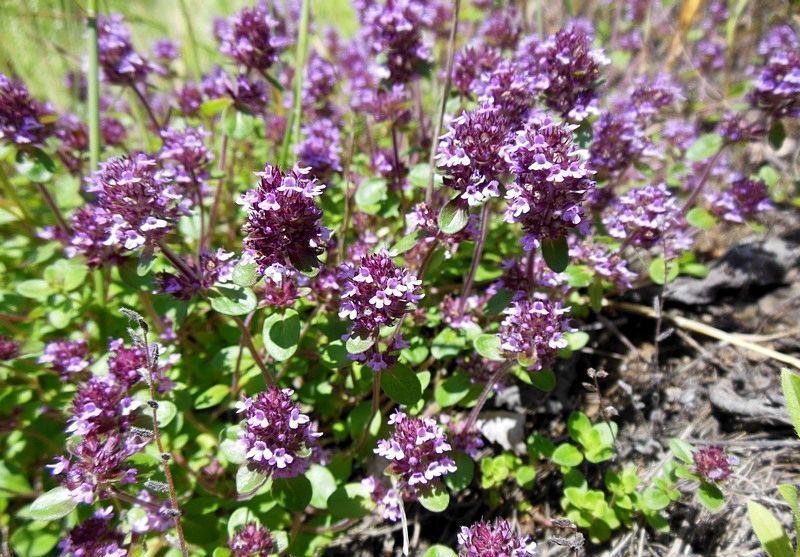
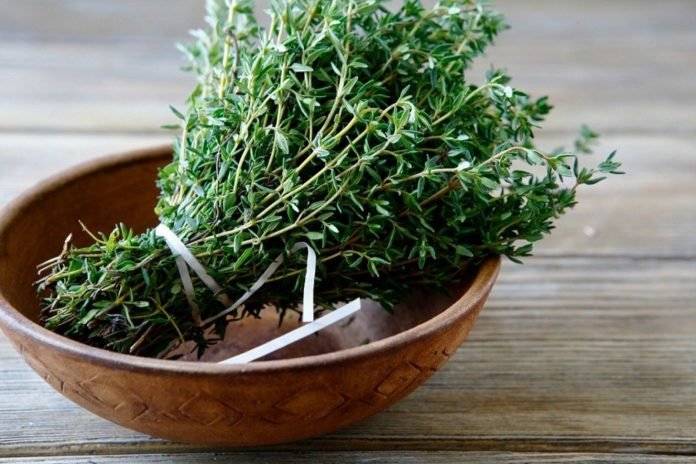
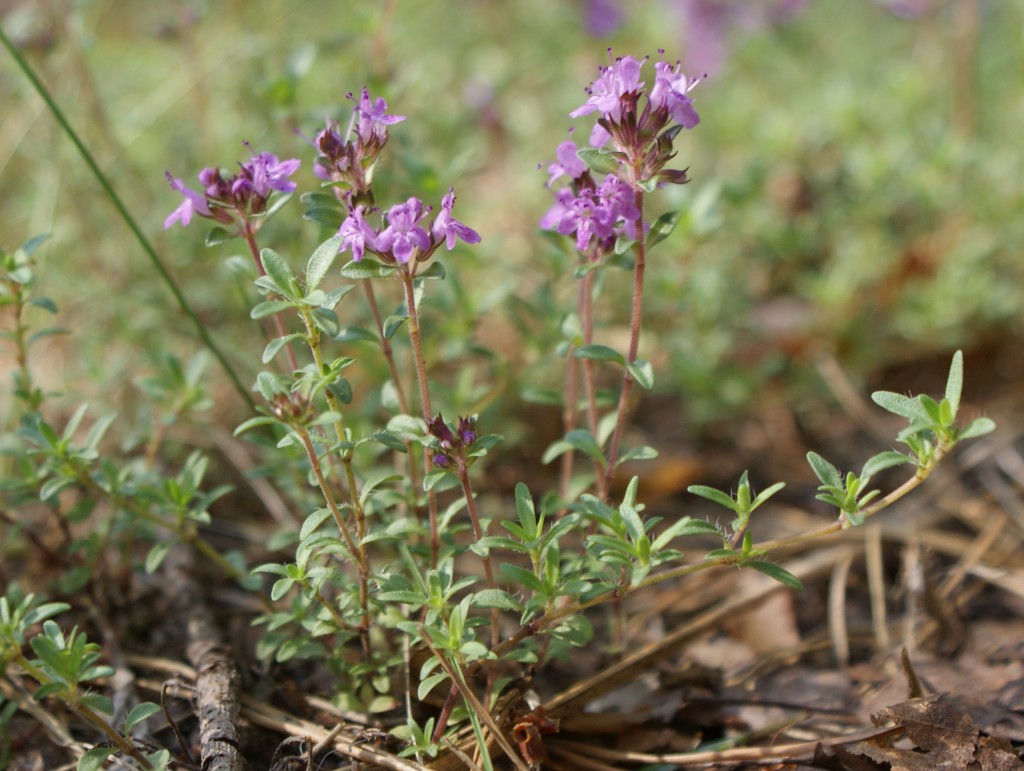 Creeping thyme: variety description, cultivation in open ground, planting and care
Creeping thyme: variety description, cultivation in open ground, planting and care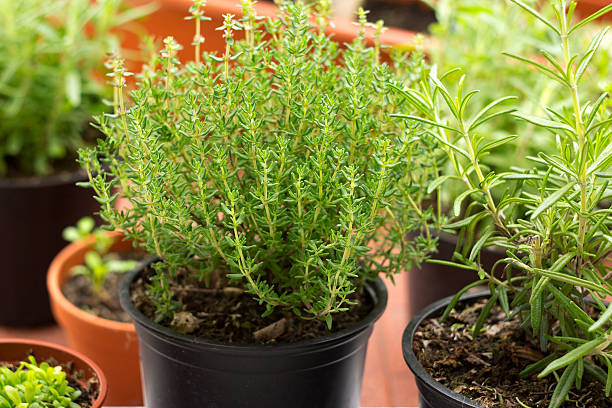 How to grow thyme from seeds at home on a windowsill in a pot
How to grow thyme from seeds at home on a windowsill in a pot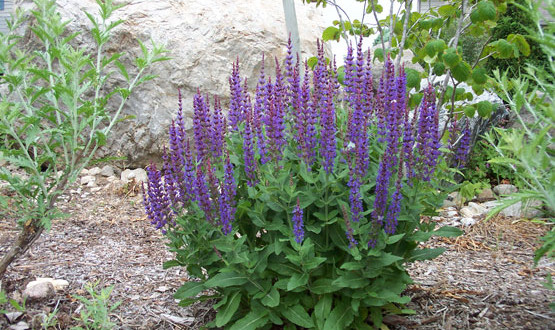 How to grow thyme in open ground near Moscow
How to grow thyme in open ground near Moscow